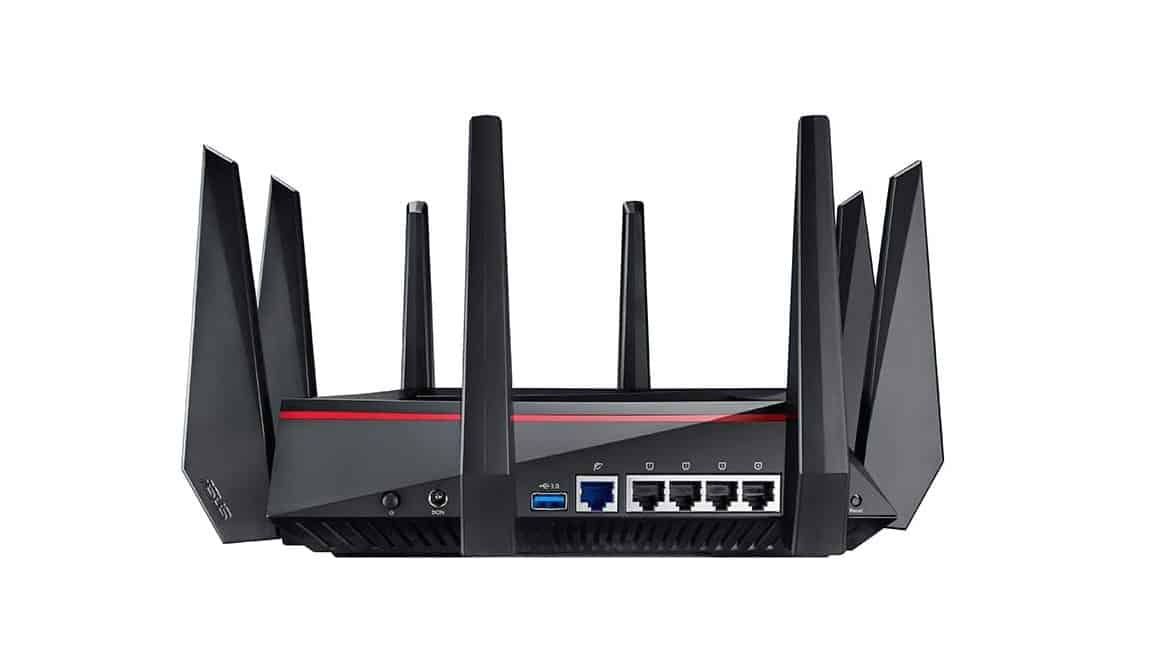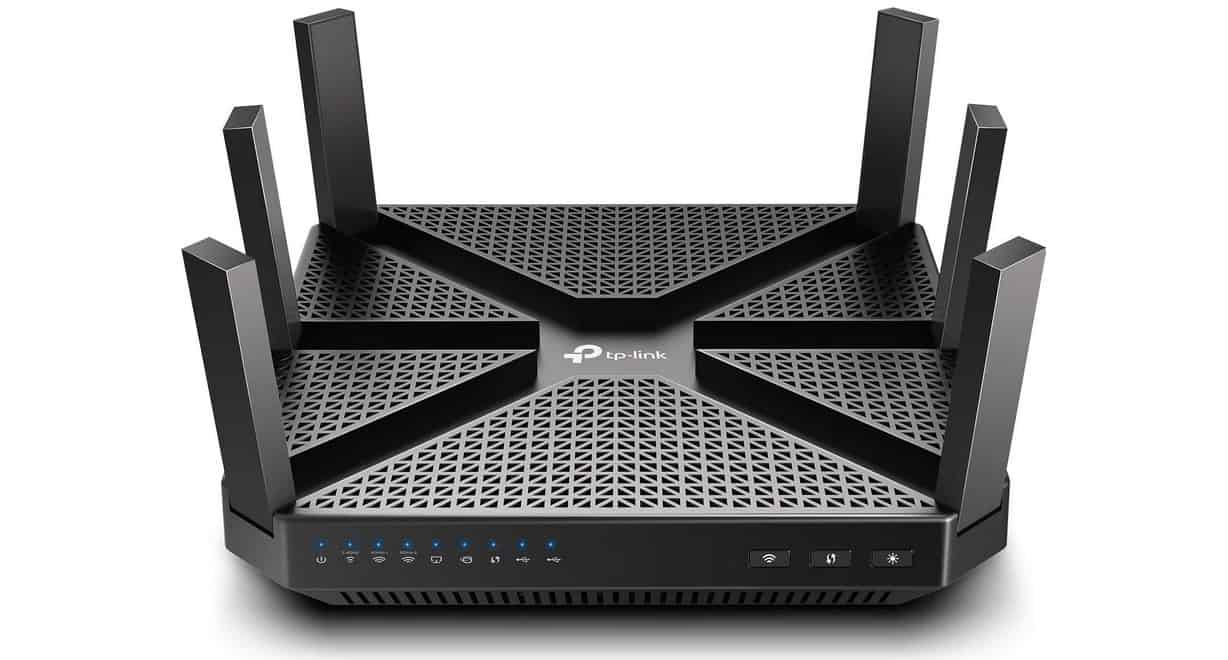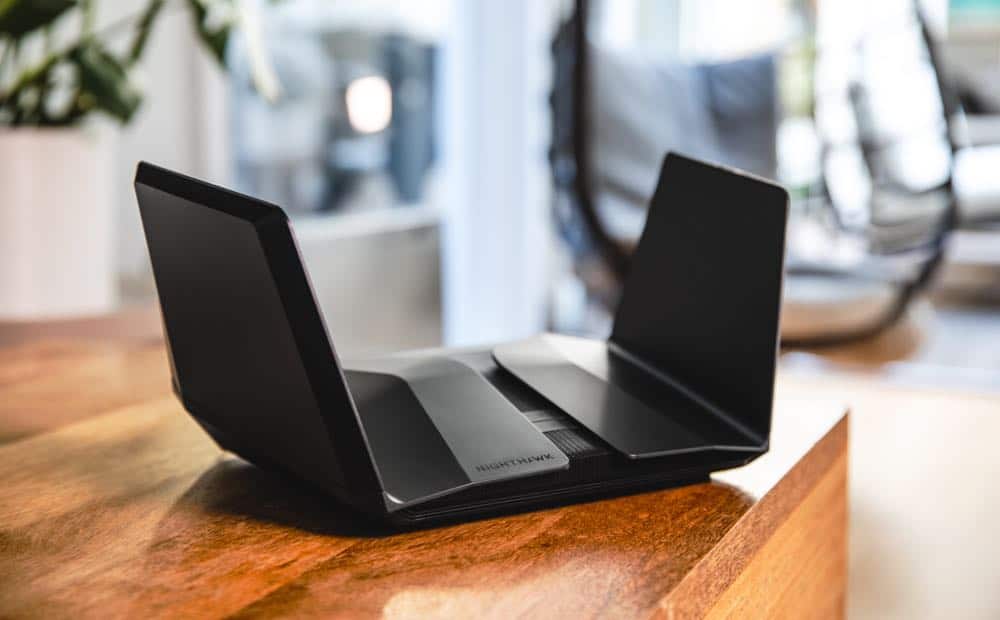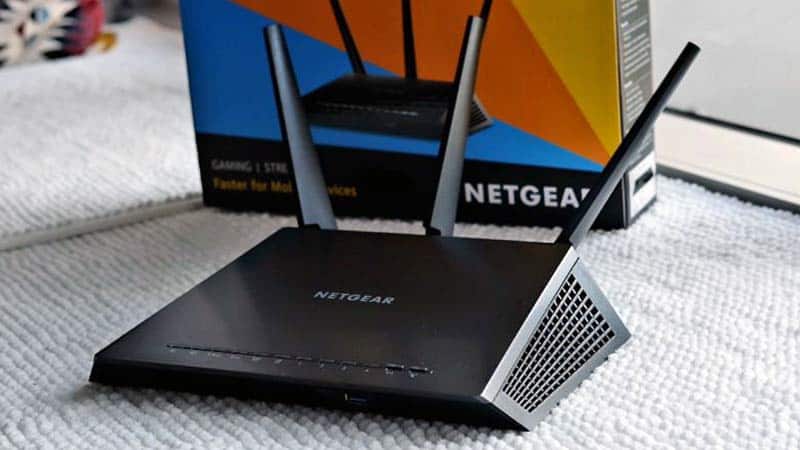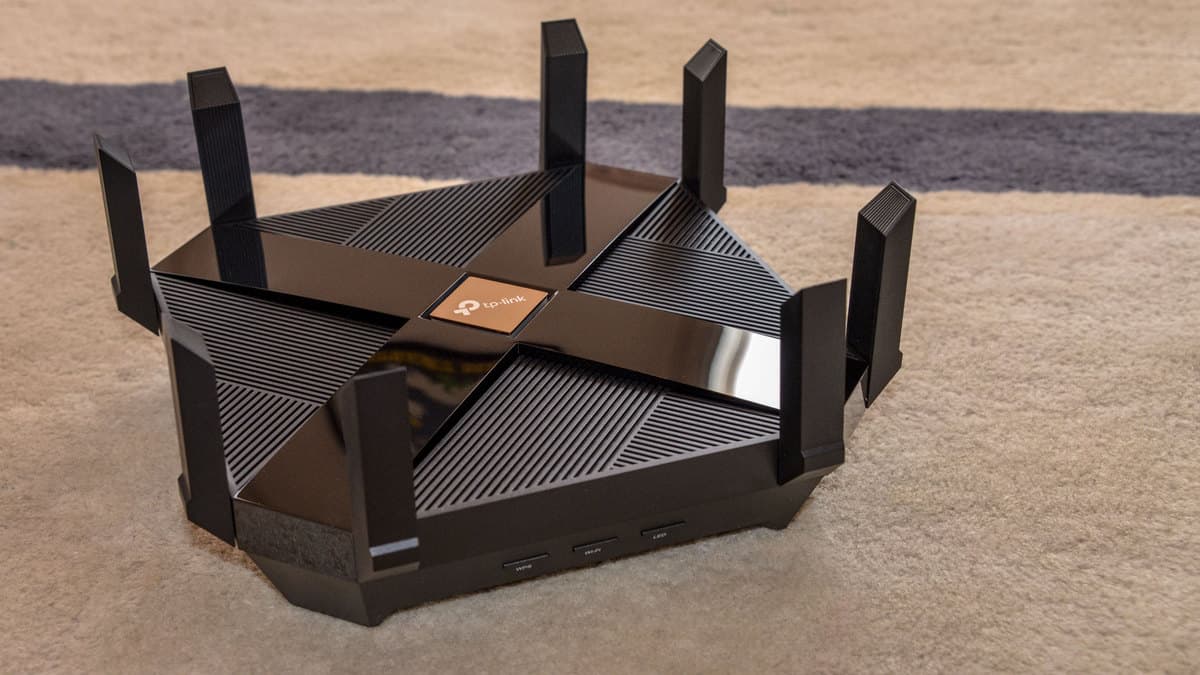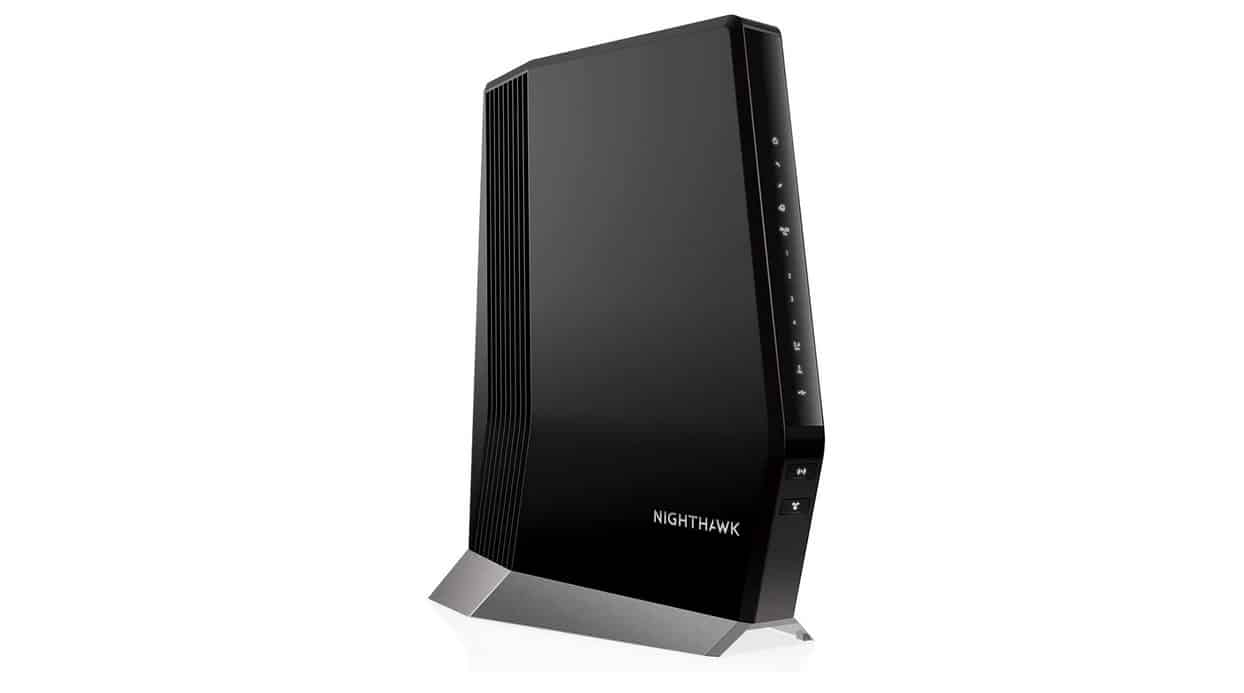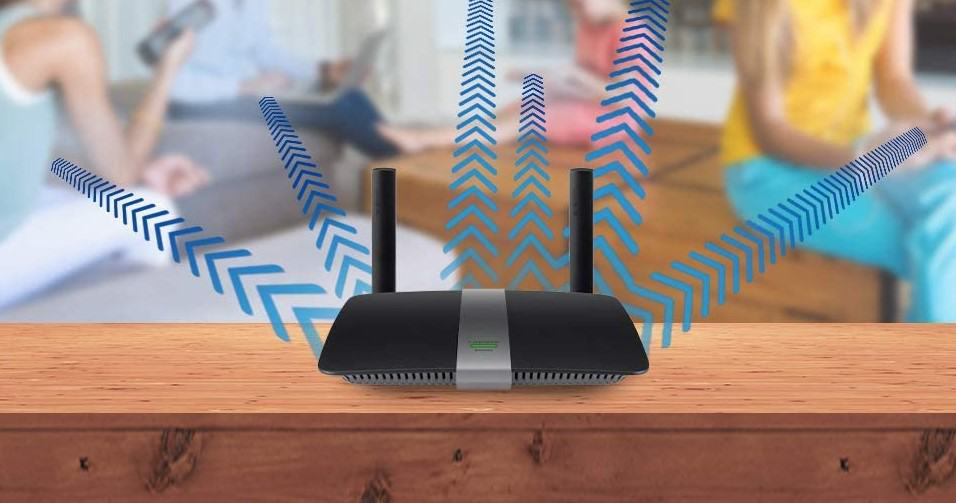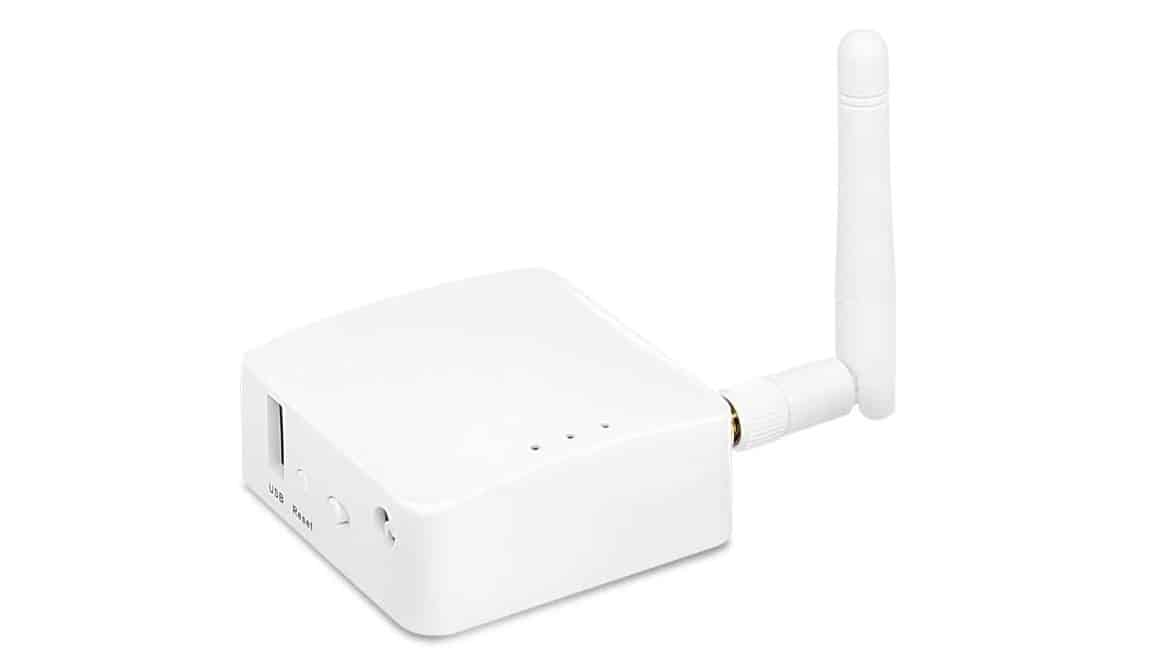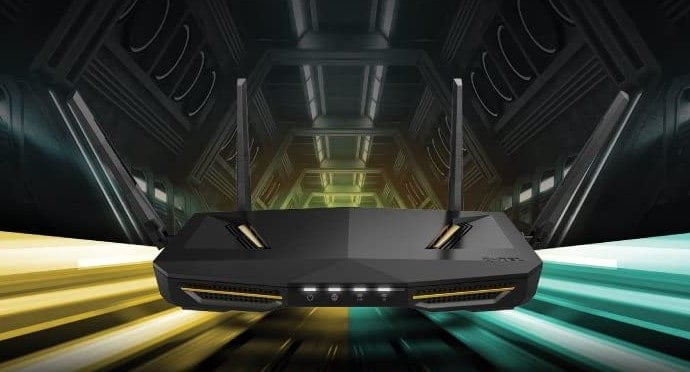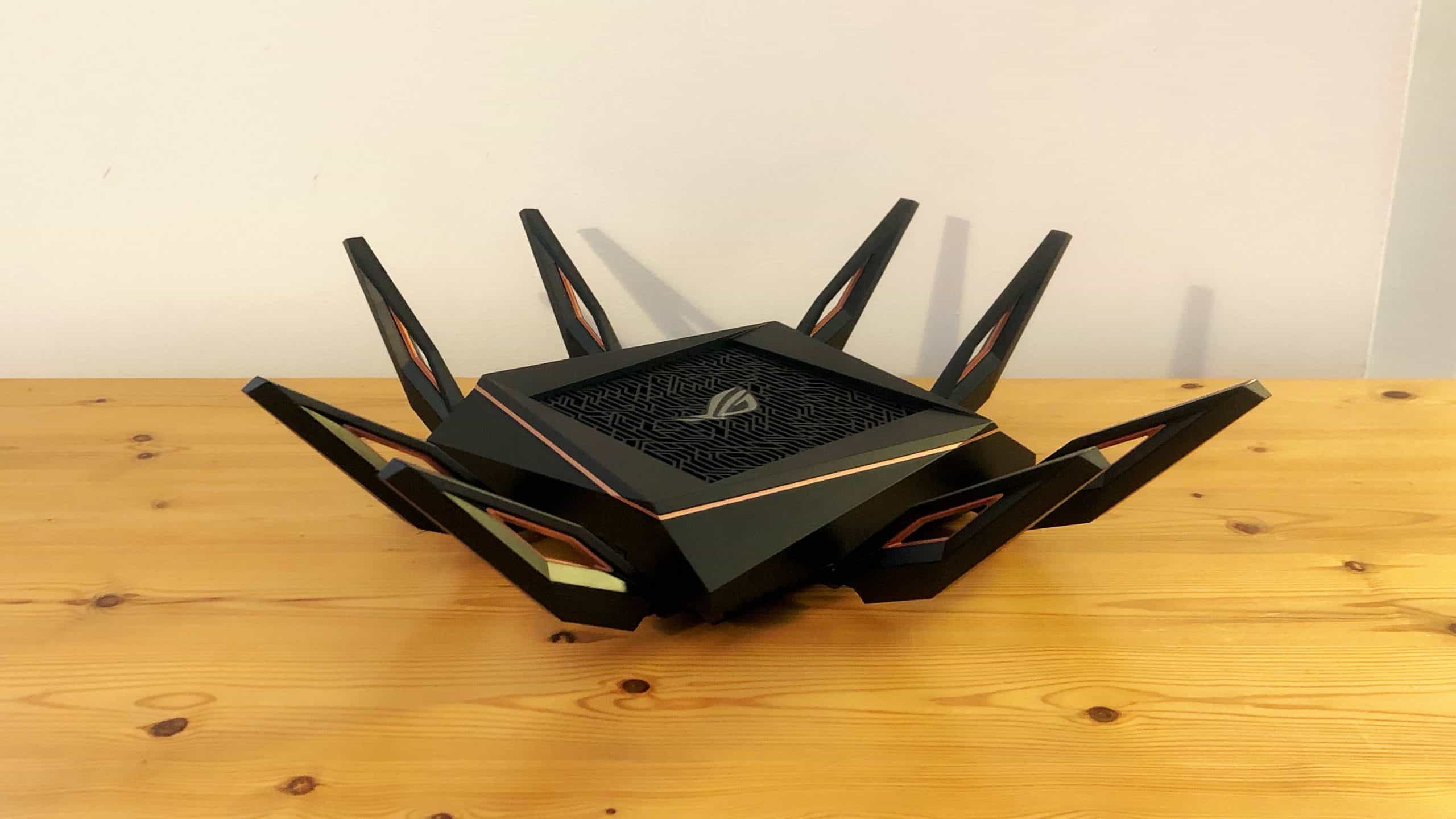Considering that streaming media is standard these days, upgrading your wireless experience by getting the best router for 4K streaming makes sense. Even if you’re not necessarily streaming content at 4K quality, having a router that can support this data-heavy content can be incredibly beneficial if you have content streaming simultaneously across multiple devices connected to your wireless network.
This type of support is known as MU-MIMO and ensures that you won’t experience lag just because someone else is also downloading content. You’ll also want to prioritize routers with faster processors and, depending on your wireless behavior, you might find that a tri-band router offers smoother wireless connectivity. And especially for people looking to connect a 4K television to their router, look for models that support beamforming.
Keep reading our best router for 4K streaming buying guide to learn more. And if you’ve just realized it’s time to upgrade your current router, start with our best router buying guide.
Top Routers for 4K Streaming
#1 Netgear Nighthawk R7350 AC2400 Router
Award: TOP PICK
WHY WE LIKE IT: It is great for HD content and online games. It also has four Ethernet ports and a USB port that can also access USB files or wired connections. It has a range of up to 2,500 square feet and can support more than 25 connected devices.
- Has great coverage
- Can support more than 25 connected devices
- Great port selection
- Users are required to create a Netgear account
The Netgear Nighthawk R7350 is a capable WiFi 6 router with a decent data transfer rate of up to 2400mbps, perfect for 4K streaming. It has a range of up to 2500 sq ft and relies on a dual-core processor for its functioning. The router runs on a dual-band frequency class and comes with four Ethernet and two USB 3.0 ports for wired connections. It can support up to 25 devices at a go and also features Beamforming technology that locks in on a connected device for a stronger, reliable connection. However, some users were not impressed that they would need to create a Netgear account during installation.
Owners who go ahead and download the Nighthawk app will have a very easy time setting up the router, and they will also be able to monitor network traffic for all the connected devices. The app also allows users to set parental controls, and this is important, especially if the household includes children. The router also features MU-MIMO technology to ensure that all the simultaneously connected devices have a speedy connection regardless of data traffic.
#2 D-Link DIR-822-US AC2600 WiFi Router
Award: HONORABLE MENTION
WHY WE LIKE IT: It has a coverage of about 1800 sq ft and can handle up to 15 simultaneous connections. It also has a relatively high data transfer rate for speedy connections and has four Ethernet and two USB ports.
- Great port selection
- Ideal for medium to large homes
- Handles up to 15 connections
- Antennas cannot be unscrewed
This D-Link AC2600 router operates on the dual-band frequency class where it is capable of speeds of up to 2600mbps in its 2.4GHz band and 1733mbps in its 5GHz band. Its speeds are high enough to accommodate 4K streaming, and since a dual-core processor powers it, its functioning is pretty swift. The router also features an intelligent quality of service feature that tracks all the connected devices for enhanced WiFi speed. Since it also features MU-MIMO technology, the connected devices will not suffer from the reduced speed at the expense of others engaged in data-heavy traffic. Unfortunately, its four antennas are fixed and cannot be unscrewed.
This router has a decent coverage area of up to 1800 sq ft and can handle up to 15 simultaneous connections. It is ideal for heavy usage, and this might involve anything from gaming to heavy downloads. The router also comes with band steering for efficient connectivity, and can be managed remotely through an app, and features WPA/WPA2 encryption for security.
#3 WavLink AC3000 WiFi Router
Award: BEST FOR EASY CONNECTIVITY
WHY WE LIKE IT: It supports touch-link technology where users can touch its top casing to connect to its network instead of using a password. It also has excellent port selection and features four Gigabit Ethernet ports, and has eight high-gain antennas for widespread coverage.
- Has Gigabit Ethernet ports for fast connectivity
- Allows for remote management through the Smart Genie app
- Interface is user friendly
- No parental control tools
This AC3000 Gigabit router from Wavlink operates on a tri-band frequency class where owners will be able to choose which network to connect to from a pool of two 5G bands and one 2.4G band. The three bands provide a combined speed of 2367mbps and reliable connectivity. The router also has a user-friendly interface and comes with dual processors for optimal performance. Unfortunately, it does not allow for parental control.
The router comes with Beamforming technology to maintain a solid signal to all the connected devices. Since it also supports touch-link technology, users won’t need a password to connect to its network. The router also features dual processors for optimal performance. Also, it comes with MU-MIMO technology to ensure that all its connected devices get to move data traffic at the same high speed. The router has four Gigabit Ethernet ports and can be managed remotely through the Smart Genie app.
#4 TRENDnet AC2600 MU-MIMO Wireless Gigabit Router
Award: BEST FOR WIRED CONNECTIVITY
WHY WE LIKE IT: It is great for light use and is also pretty easy to set up. It has four Gigabit Ethernet ports and offers parental controls to control what their kids have access to.
- Great for wired connectivity
- Has parental controls to control kid’s Internet access
- Offers four high speed Gigabit ports
- Consistently drops signal
The Trendnet TEW-827DRU wireless gigabit router operates on a single band frequency but still has a pretty high data transfer rate of up to 1733mbps per second, making it great for 4K streaming. It allows people to utilize up to four data streams per band, and since it also comes with parental controls, owners will be able to limit the kind of content that their kids have access to and monitor their website traffic. The router also features four high-gain antennas for expanded connectivity. However, previous users have still complained that it consistently drops signals.
The Trendnet wireless gigabit router features four high-speed Gigabit ports and comes with Beamforming technology to focus signals in a specific direction. It uses MU-MIMO technology to process multiple data streams simultaneously and allows users to create an isolated WiFi network for guest Internet access.
#5 Rockspace AX1800 WiFi 6 Router
Award: BEST FOR WIDE COVERAGE
WHY WE LIKE IT: It has excellent range since it can provide coverage for up to 2500 sq ft. It can also handle up to 35 device connections and features a dual-core processor for efficient functioning.
- Has great range
- Can handle up to 35 device connections
- Dual core processor for efficient functioning
- No app for easy navigation or remote management
The Rockspace WiFi router for wireless Internet is a WiFi 6 router that offers relatively fast connectivity and speeds up to 1800mbps. The router has a coverage of up to 2500 sq ft and can easily handle up to 35 device connections. It also comes with BSS color and dual-band technology to prevent overlapping networks, and since it also features a dual-core processor, its functioning is very efficient. Its use of MU-MIMO technology ensures that all devices benefit from high-speed connectivity, but it does not come with an app for easy navigation or remote management.
With advanced security encryption, the Rockspace router is engineered to ensure that all the connected devices do not get hacked, and since it also comes with a WPS button, it is very easy to set up. It has four Gigabit Ethernet ports and a USB 3.0 port, which is great for faster transfer rates.
#6 Vanin AX1500 Dual Band AX WiFi Router
Award: BEST FOR EFFICIENT FUNCTIONING
WHY WE LIKE IT: It comes with a tri-core 1.5GHz processor that ensures that its functioning is sublime, and since it operates on a two-band frequency class, users will have the option to choose which band to connect to based on their requirements
- Powerful tri-core processor for efficient functioning
- Decent port selection
- Comes with a WPA3 protocol for data encryption
- Firmware is difficult to get around
The Vanin WiFi 6 router is a simple dual-band router that offers speeds of up to 300mbps on its 2.4GHz band and 1200mbps on its 5GHz band. This way, it can support high-traffic activities like 4K streaming and online gaming. It also has a powerful tri-core processor that keeps it fast and comes with four Gigabit LAN ports so that non-WiFi devices can also be connected to it. The router also features a WPA3 protocol to encrypt user data, but some users have reported that its firmware is too challenging to get around.
This dual-band WiFi router also allows owners to set up parental controls to prevent their kids from visiting unwanted sites, and since it also supports WPS pairing, users will have a very easy time pairing it with other devices. The router also has a data transfer rate of about 300mbps and supports OFDMA technology.
Beginner’s Guide to Routers for 4K Streaming
What are Routers for 4K Streaming?
A 4K streaming router is simply a router with a fast processor that can support multiple connected devices simultaneously downloading or uploading large data files without experiencing lag or connectivity issues. While they might not always be promoted as a “4K streaming router,” these devices will usually feature enhanced connectivity support to prevent lag or dropped connections.
This is especially important for consumers that own 4K televisions or displays. 4K is a higher resolution (sometimes known as ultra HD) than standard high definition (HD) content. This translates to larger files being sent through the network.
When trying to stream 4K content on a network with a wi-fi router that’s not fast enough, you’ll experience buffering. This is true even if you technically have an internet plan with a higher speed, such as a fiber-based option like Verizon FiOS or Google Fiber which comes standard with the best router for Google Fiber. If your router is slower than the promoted internet speeds, you’ll experience throttling.
Routers for 4K Streaming vs Other Wireless Routers
The most significant difference between a 4K streaming compatible router and other wireless routers is the processor. Especially for 4K content, routers that can support download speeds of at least 25 megabits per second (Mbps) are the bare minimum required to avoid buffering and connectivity issues.
Likewise, 4K compatible routers will also offer better Quality of Service (QoS). QoS simply means that your router intuitively knows where to prioritize seamless connectivity. And in many cases, these premium routers also feature tri-band support compared to the standard dual-band that most routers feature.
Dual-band allows for a 2.5GHz and a 5GHz band, allowing more standard WiFi devices like phones and Bluetooth-supported accessories to operate on the 2.5GHz band. Meanwhile, the 5GHz band can be dedicated to heavy-usage devices such as 4K televisions or online gaming.
Tri-band routers come with an additional 5GHz band, with some models featuring a relatively new 6GHz band or Wi-Fi 6. Tri-band can be ideal for consumers that regularly process large data files via WiFi.
And finally, 4K-friendly routers often feature beamforming and MU-MIMO technology. MU-MIMO is short for multi-user, multiple-input, and multiple outputs. This simply means that the router can support simultaneous device connections and data activity without the end-user(s) experiencing lag.
Beamforming refers to your router’s antenna strength and its ability to push a narrow, targeted signal directly towards your 4K television or devices rather than general blanket coverage. The upside of beamforming is that your television or device will have a stronger, more reliable wireless connection.
How Routers for 4K Streaming Work
4K compatible routers work exactly like a slower wi-fi router would but with performance upgrades. Routers act as intermediaries, receiving an internet signal from your internet service provider (ISP) and then pushing it either through a wired or wireless local network connection to the devices in your home. At a minimum, assuming you have a fast enough internet plan, your router should be able to support wireless speeds of at least 25 Mbps.
But routers for 4K streaming usually include advanced features that provide enhanced signal strength and connection stability — especially with support for multiple devices to use the internet simultaneously. They often feature faster processing speeds, which means they can support speedier internet connections.
However, you’ll still want to ensure that your 4K-friendly wifi router has ports, specifically an ethernet port. While you can stream wirelessly without experiencing lag or signal loss, there’s no denying that wired connections are always faster and more stable than wireless versions. If you’re concerned about connectivity for streaming devices like gaming consoles or 4K televisions, a wired connection between the device and your router can minimize issues.
Depending on the router you select, you can also get premium features such as MU-MIMO, beamforming, and tri-band. MU-MIMO ensures that multiple devices can not only access the internet but move large data packets without experiencing connectivity issues.
Meanwhile, beamforming is ideal if you prefer wireless connections for 4 K-compatible devices. With beamforming, your router’s antenna can send a narrowed signal directly towards specific devices, ensuring a stronger connection. And a tri-band enabled router means that you can designate simple connected devices to different bands, setting general Bluetooth enabled devices on the lower 2.4GHz band, and data-heavy devices like televisions and consoles can use the higher 5GHz and 6GHz bands.
Why You Should Buy a Router for 4K Streaming
Even if you don’t have a 4K television or gaming console, there are plenty of reasons why upgrading your current router to one with a faster processor and more features can be a smart move.
Is a Router for 4K Streaming Worth Buying?
- You Routinely Work with Large Files: Whether you’re a graphic designer, videographer, or producer, if you work with large files that you have to send to clients or vendors, a router rated to support 4K streaming can ensure that you don’t spend all day waiting for files to transfer.
- You Have a Fiber Internet Connection: Similar to consumers that work in data-heavy fields, if you have access to a lightning-fast internet plan, the last thing you want is a router that throttles you.
- You Need to Support Multiple Devices: If you live in a household full of connected devices, you might find that you need the premium QoS that a 4K compatible router can provide to minimize the risk of lag or connectivity loss.
Why a Router for 4K Streaming May Not Be for You
- You Don’t Stream Entertainment Content: If you still rely on traditional cable or only watch movies in the theater, you may feel like a 4K compatible router is an excessive item to purchase.
- You Have a Slow Internet Connection: Two factors impact 4K streaming — your internet plan speed and router compatibility. You need an internet plan that’s at least 25 Mbps for download speeds. If you have a slower plan than this and don’t plan on upgrading, a 4K streaming router is not a smart investment.
- You Don’t Have a Traditional Internet Plan: These days, many people opt to use their mobile data plan for simple internet browsing around the home by turning their phones into hot spots. While this isn’t recommended as a long-term solution for streaming entertainment content, if this sounds like your situation, you don’t need a 4K compatible router. Instead, you might be in the market for the best TP link router.
How Long Will a Router for 4K Streaming Last?
Similar to all other routers on the market, the general guideline is to expect to achieve three to five years of consistent use out of a router before you need to replace it. This is usually because innovations with WiFi can cause forced obsolescence over time. But that timeline assumes that you aren’t roughly handling your router or exposing it to moisture or other factors which can damage it.
If you’re not sure whether you should replace your router, consider the following signs that it’s time for an upgrade. A good sign that you need a new router is if you can no longer connect wirelessly to the internet and instead have to rely on a wired connection. If your indicator lights on your router no longer work, it’s a sign that your router might be towards the end of its life. And of course, if it fails to turn on at all, it’s time for a new router.
How to Choose the Best Routers for 4K Streaming
When shopping for a router that can support 4K connectivity, ensure that the processor can at least handle 25 Mbps. You’ll also want to focus on other factors, like MU-MIMO, beamforming, and tri-band. Keep in mind that the maximum speed you can achieve is limited by your internet plan and the router you select.
Routers for 4K Streaming Key Factors to Consider
1. Is it compatible with your ISP?
Before buying anything, make sure your router is compatible with the ISP you’re subscribed to and supported by your specific internet plan. Most ISPs allow you to use a third-party router, but not all are compatible. Typically, you can go online to your ISP’s website and confirm that the router you want will work with their network’s technical specifications.
2. What speeds are supported?
Processor speed is one of many key features you need to consider when shopping for a 4K compatible router. At a minimum, 4K requires speeds of at least 25 Mbps. If your router can’t reach this speed, it’s too slow. But there’s a caveat. That 25 Mbps recommendation is per device or user. So, if you have a family of four with all members streaming content simultaneously, that means you need a router that can achieve at least 100 Mbps to ensure that no one experiences lag or buffering.
But also take into account the maximum speeds your internet plan can achieve. If you have a higher internet speed with your current plan, you’ll want to get a router that can reach that speed or better. This way, if or when your ISP upgrades your current speed (which is a common practice among many providers), your router won’t throttle you. Picking a router that’s rated for speeds significantly higher than your current plan offers is an excellent way to futureproof your purchase.
3. Is MU-MIMO important to you?
MU-MIMO stands for multi-user, multiple-input, and multiple-output technology. In short, it means that multiple devices can not only be simultaneously connected to the internet, but all be engaged in heavy data transfers without experiencing buffering, lag, or connectivity issues.
4. How is the QoS?
QoS or quality of service simply means that your router automatically knows to prioritize some internet functions over others. For example, if in a household of four internet users, one is video streaming and the others are casually browsing, your router would know to prioritize the device streaming a movie for a lossless connection.
5. Do you need beamforming?
Beamforming simply means that your wireless router can send targeted signals to specific devices such as televisions and gaming consoles. Direct signaling allows for a more stable connection that’s also faster. Especially if you’re planning on streaming heavy entertainment content files, beamforming can be a great option.
6. Do you need a dual or tri-band router?
If you’re shopping for a router that’s compatible with 4K streaming, there’s a good chance that you have multiple devices in your home that are also connecting to the internet. Dual-band routers are relatively standard and mean that you have both a 2.4GHz and 5GHz band. The 2.4GHz band is ideal for low-consumption wireless devices like Bluetooth-enabled speakers and even most casual browsing behavior.
In contrast, the 5 GHz band is less congested and is better dedicated to high consumption devices like connected televisions and gaming consoles, streaming sticks, and other digital entertainment device portals. With a tri-band router, you’ll usually get one 2.4GHz band and two 5GHz bands. However, some tri-band routers now come with a 6GHz band, although this technology is still somewhat new and not heavily supported by devices currently on the market.
7. What ports are supported?
Typically, you’re going to need a router with ports, regardless of whether it’s 4K supported or not. Typically this is because your ISP will require one wired connection to establish your home’s local network connection. However, it’s a good idea to look for routers with USB ports and ethernet ports.
An ethernet port means that if you prefer a more stable wired connection for data-heavy usages — such as with your 4K television or gaming console — you can easily establish one. Likewise, USB 3.0 ports are great for downloading content directly from a storage device like a flash drive.

![Best Routers for 4K Streaming in [year] 1 best router for 4k streaming](https://www.gadgetreview.dev/wp-content/uploads/best-router-for-4k-streaming-image.jpg)


![Best Routers for 4K Streaming in [year] 2 NETGEAR Nighthawk R7350 AC2400 Router: Fast Beamforming...](https://m.media-amazon.com/images/I/313GuMXeGZL._SL160_.jpg)
![Best Routers for 4K Streaming in [year] 4 D-Link WiFi Router, AC2600 MU-MIMO Dual Band Gigabit 4K...](https://m.media-amazon.com/images/I/41zM7IxdyOL._SL160_.jpg)
![Best Routers for 4K Streaming in [year] 5 WAVLINK WiFi Router AC3000 Tri-Band Gigabit Ethernet...](https://m.media-amazon.com/images/I/41qFT237uAL._SL160_.jpg)
![Best Routers for 4K Streaming in [year] 10 Our #4 Pick is the TRENDnet AC2600 MU-MIMO Wireless Gigabit Router](https://m.media-amazon.com/images/I/315HQwH7KiL._SL160_.jpg)
![Best Routers for 4K Streaming in [year] 12 Our #5 Pick is the Rockspace AX1800 WiFi 6 Router](https://m.media-amazon.com/images/I/41QaXoLleEL._SL160_.jpg)
![Best Routers for 4K Streaming in [year] 13 Our #6 Pick is the Vanin AX1500 Dual Band AX WiFi Router](https://m.media-amazon.com/images/I/316roX8HVTL._SL160_.jpg)


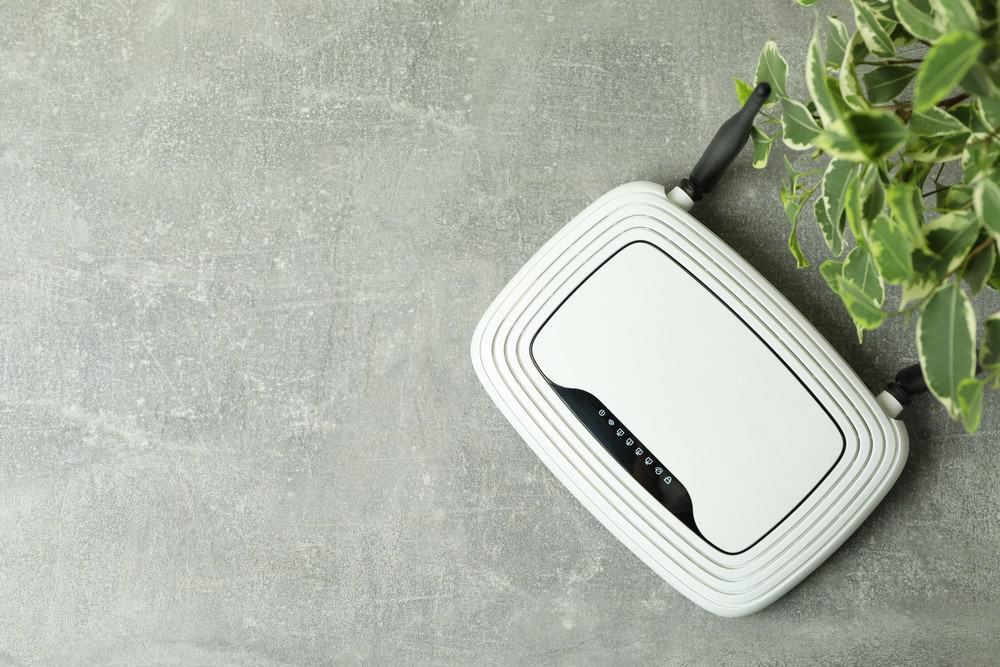
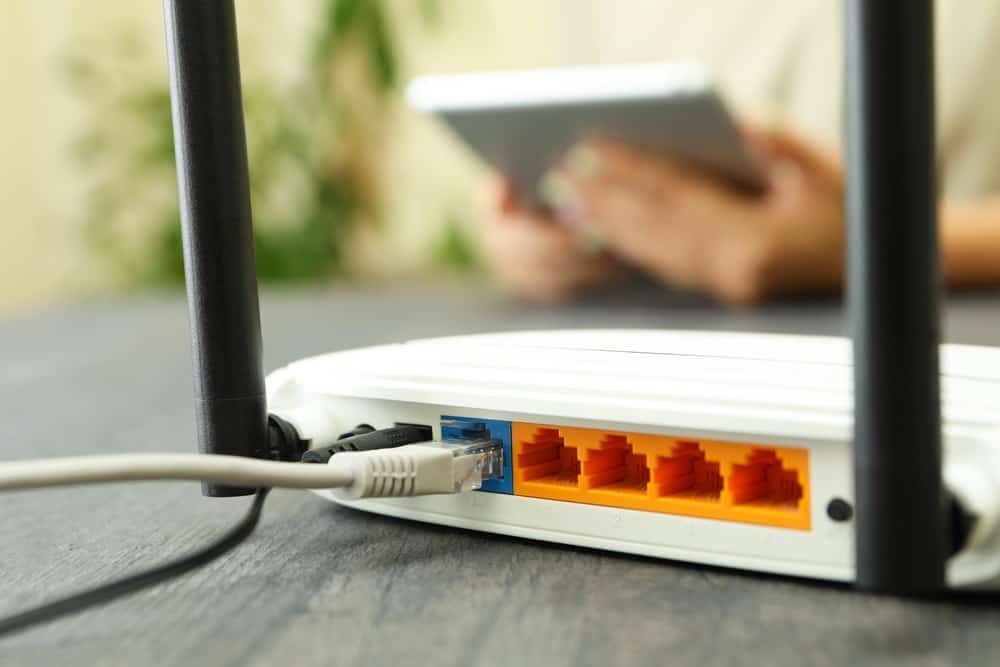
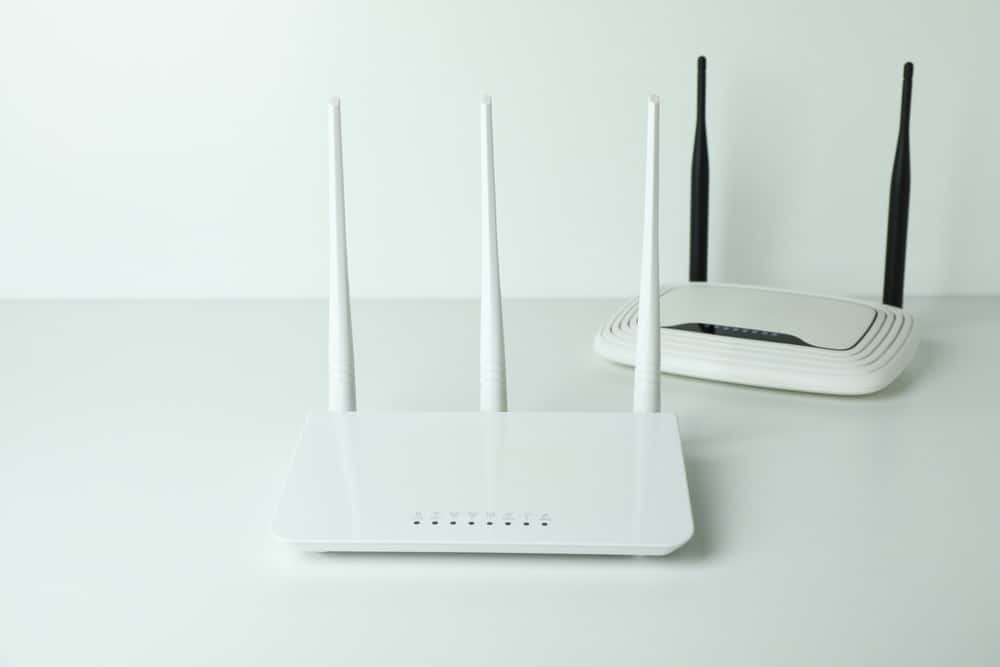





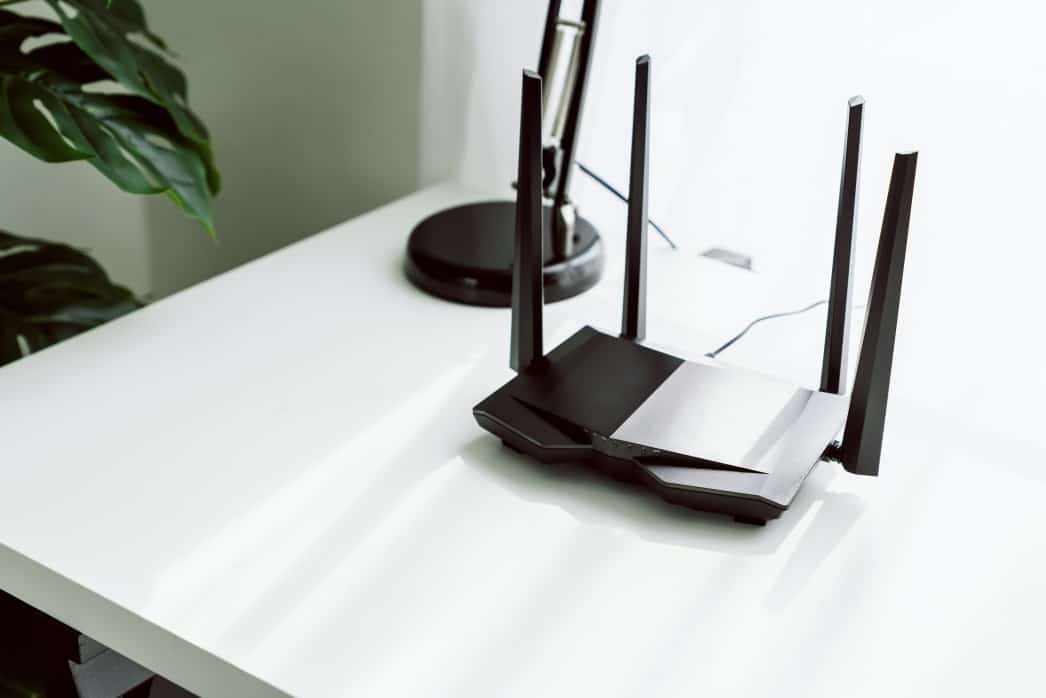
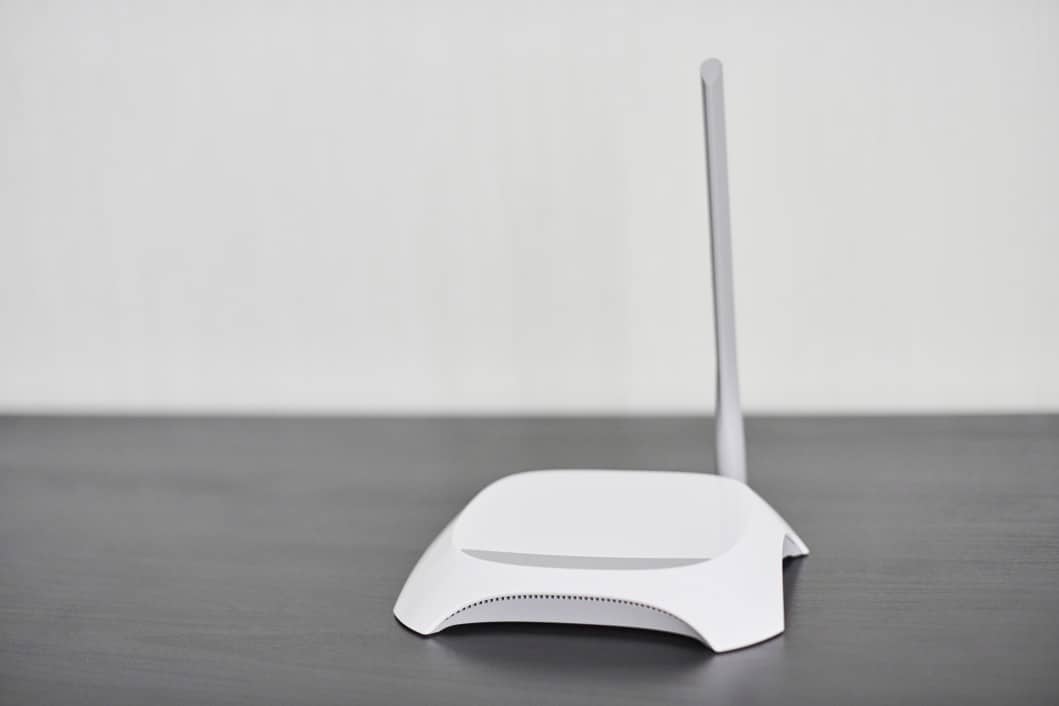



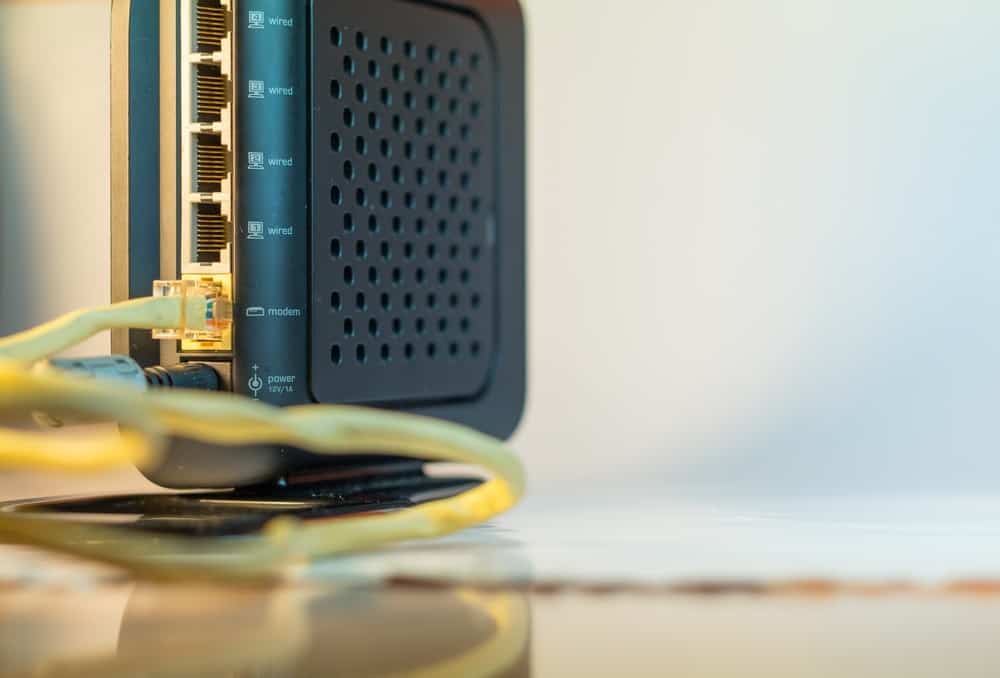

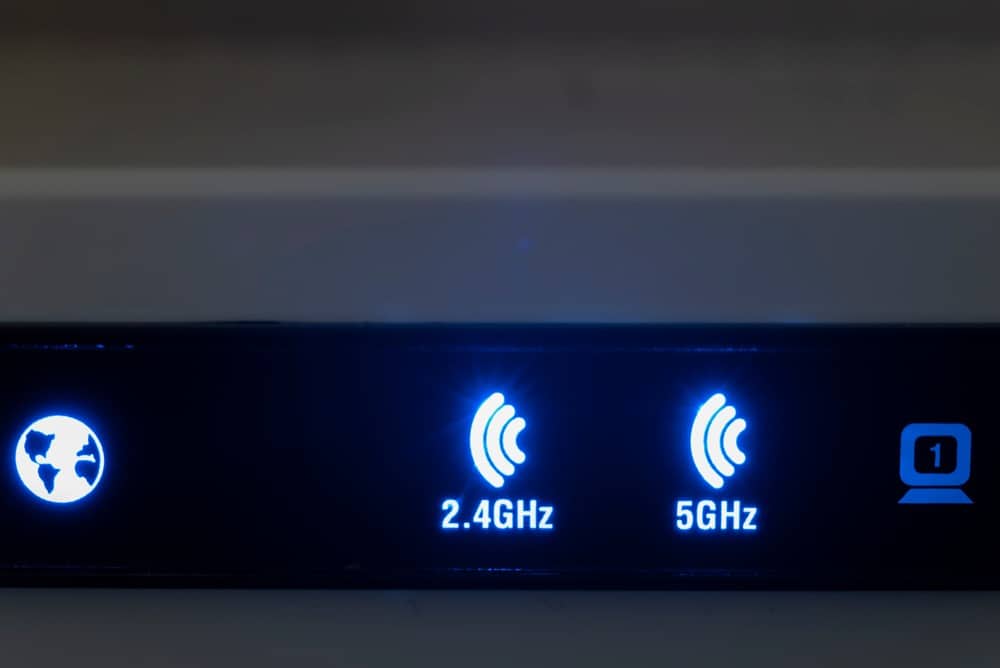

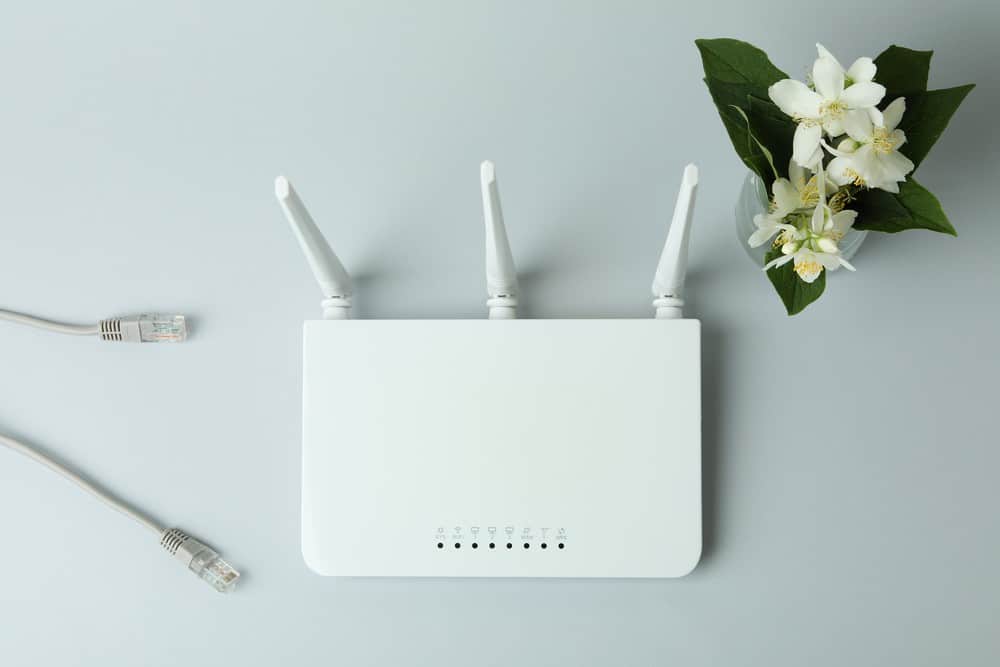
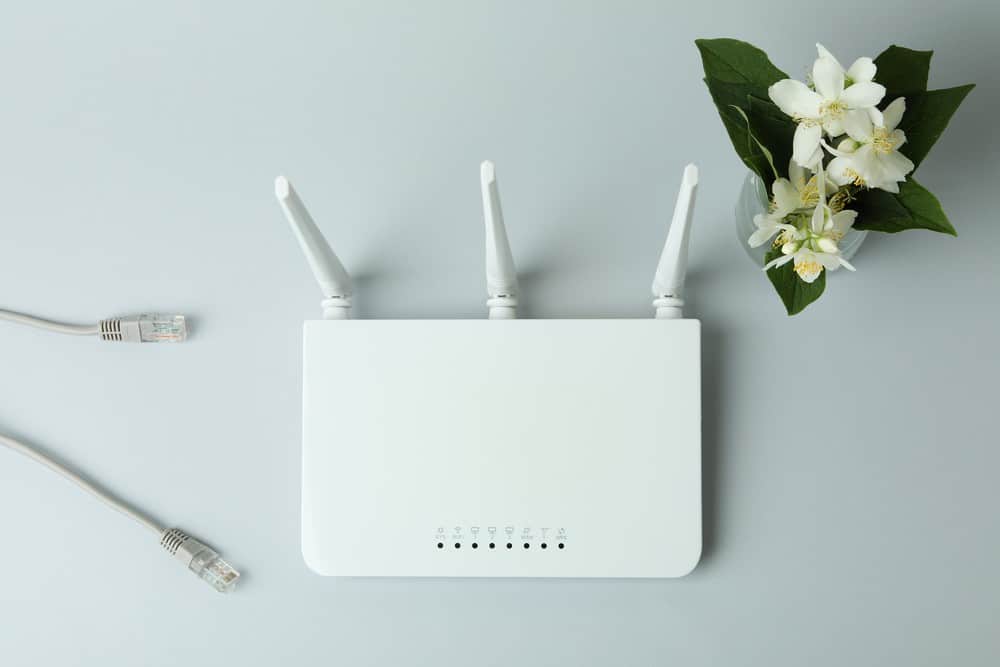

![Best BenQ Monitors in [year] 34 Best BenQ Monitors in 2026](https://www.gadgetreview.dev/wp-content/uploads/best-benq-monitor-image.jpg)
![Best Wifi Extenders For FiOS in [year] 35 Best Wifi Extenders For FiOS in 2026](https://www.gadgetreview.dev/wp-content/uploads/best-wifi-extender-for-fios-image.jpg)
![Best Fiber Optic Routers in [year] 36 Best Fiber Optic Routers in 2026](https://www.gadgetreview.dev/wp-content/uploads/best-fiber-optic-router-image.jpg)
![Best VoIP Routers in [year] 37 Best VoIP Routers in 2026](https://www.gadgetreview.dev/wp-content/uploads/best-voip-router-image.jpg)
![Best Routers for 200Mbps in [year] 38 Best Routers for 200Mbps in 2026](https://www.gadgetreview.dev/wp-content/uploads/best-router-for-200mbps-image.jpg)
![Best Routers for Optimum in [year] 39 Best Routers for Optimum in 2026](https://www.gadgetreview.dev/wp-content/uploads/best-router-for-optimum-image.jpg)
![Best Routers for Apple in [year] 40 Best Routers for Apple in 2026](https://www.gadgetreview.dev/wp-content/uploads/best-router-for-apple-image.jpg)
![Best Routers for Frontier FIOS in [year] 41 Best Routers for Frontier FIOS in 2026](https://www.gadgetreview.dev/wp-content/uploads/best-router-for-frontier-fios-image.jpg)
![Best Secure Routers in [year] 42 Best Secure Routers in 2026](https://www.gadgetreview.dev/wp-content/uploads/best-secure-router-image.jpg)
![Best Routers for Google Fiber in [year] 43 Best Routers for Google Fiber in 2026](https://www.gadgetreview.dev/wp-content/uploads/best-router-for-google-fiber-image.jpg)
![Best Routers for Cox in [year] 44 Best Routers for Cox in 2026](https://www.gadgetreview.dev/wp-content/uploads/best-router-for-cox-image.jpg)
![Best Asus Routers in [year] 45 Best Asus Routers in 2026](https://www.gadgetreview.dev/wp-content/uploads/best-asus-routers-image.jpg)
![Best Linksys Routers in [year] 46 Best Linksys Routers in 2026](https://www.gadgetreview.dev/wp-content/uploads/best-linksys-routers-image.jpg)
![Best Routers for CenturyLink in [year] 47 Best Routers for CenturyLink in 2026](https://www.gadgetreview.dev/wp-content/uploads/best-router-for-centurylink-image.jpg)
![Best WiFi Routers for Multiple Devices in [year] 48 Best WiFi Routers for Multiple Devices in 2026](https://www.gadgetreview.dev/wp-content/uploads/best-wifi-router-for-multiple-devices-image.jpg)
![Best Wired Routers in [year] 49 Best Wired Routers in 2026](https://www.gadgetreview.dev/wp-content/uploads/best-wired-router-image.jpg)
![Best Cisco Routers in [year] 51 Best Cisco Routers in 2026](https://www.gadgetreview.dev/wp-content/uploads/best-cisco-routers-image.jpg)
![Best eero Routers in [year] 52 Best eero Routers in 2026](https://www.gadgetreview.dev/wp-content/uploads/best-eero-routers-image.jpg)






